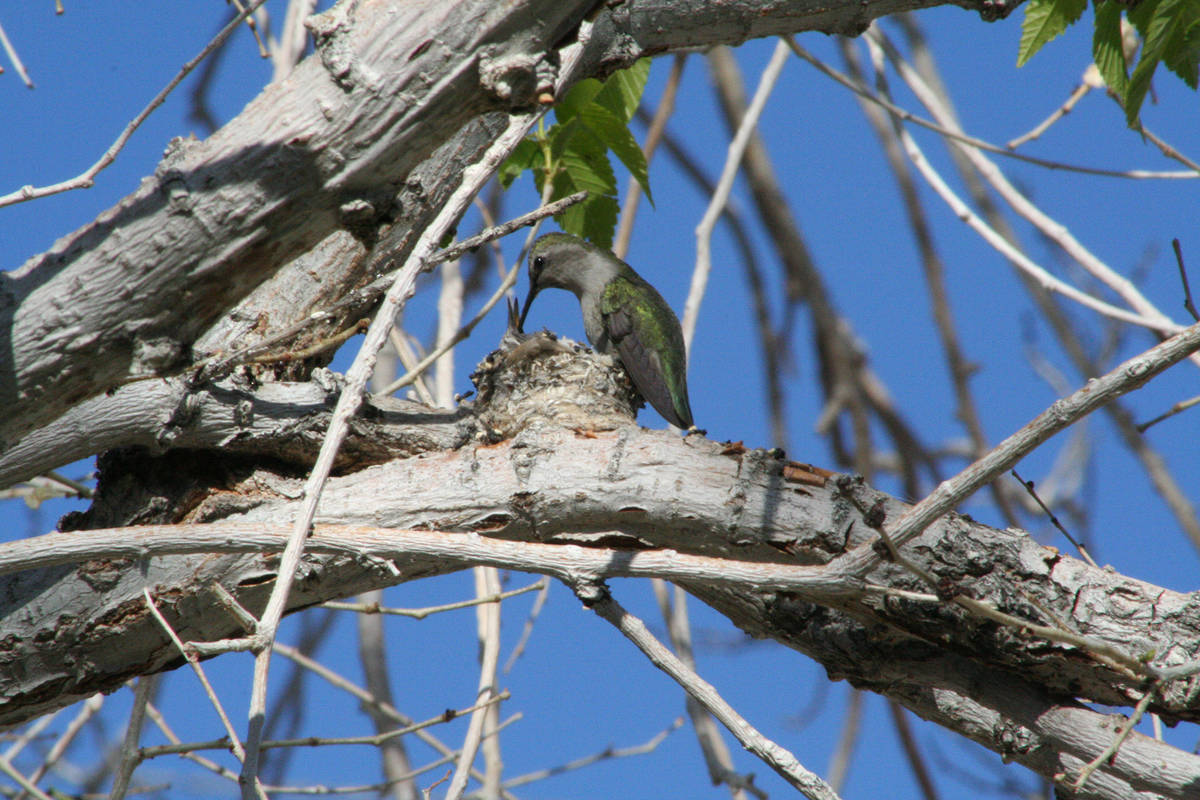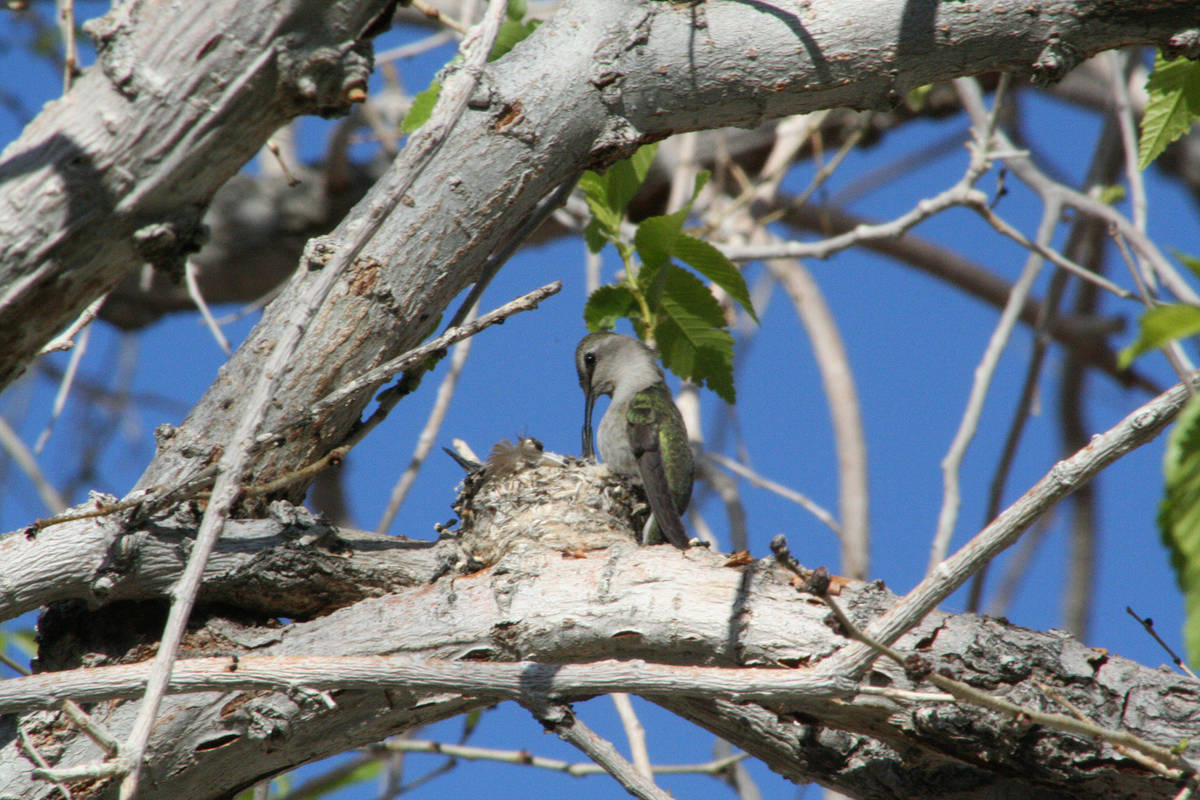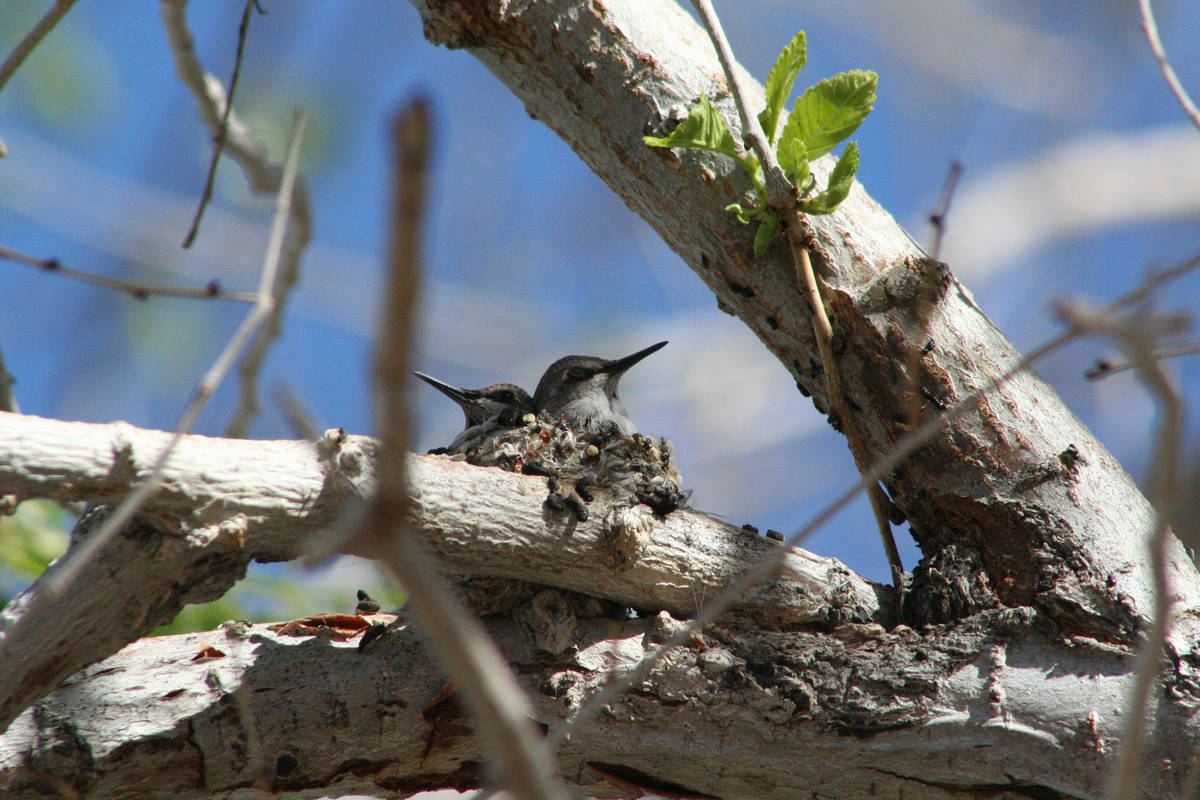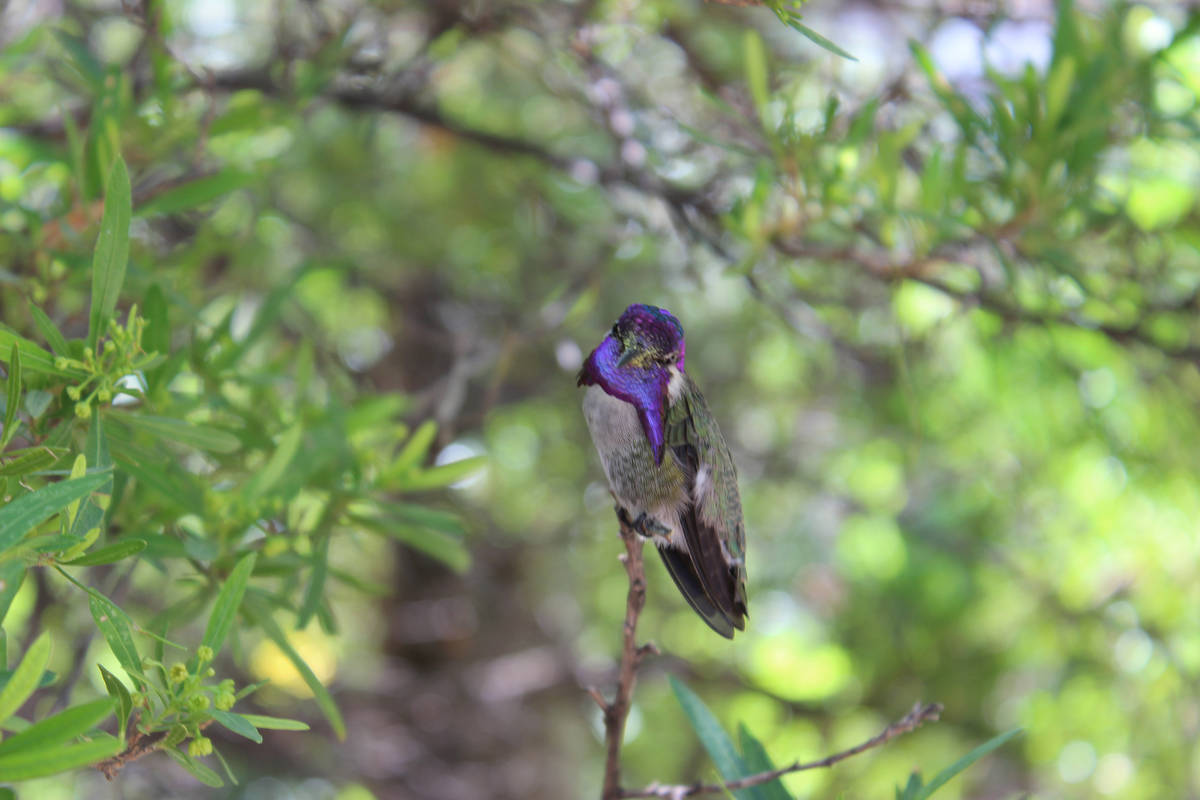Hummingbirds are Southern Nevada’s winged wonders
It’s a good time of year for spotting hummingbirds in Southern Nevada. Attracting them to your yard or patio is as simple as putting up a feeder, but be prepared to frequently clean the feeder and change the nectar.
More than 300 species of hummingbirds are native to the Americas. In our area, the most common are Costa’s, Anna’s, black-chinned and broad-tailed hummingbirds. Costa’s and Anna’s often stay year-round if they have a steady source of food. The Rufous hummingbird is also seen here during its migration in spring and fall, and the calliope hummingbird, the smallest North American-breeding bird, is sometimes a summer visitor.
Inexpensive yet reliable hummingbird feeders are available at most grocery, hardware and big-box stores, as well as online. Most are red because that color attracts hummers to a new feeder. Ideally, get one that has a little perch in front of the feeding areas and is easy to take apart and clean.
Hang the feeder in a quiet place. Shade is preferable, as is a spot you can easily reach and remove the feeder for cleaning and refilling.
Making nectar is easy: It is four parts water, one part pure cane, white granulated sugar, such as Domino. Do not use raw, brown or powdered sugar, syrups or sugar substitutes, or powdered drink mixes, as any of these could be harmful or fatal to the birds. Do not add red food coloring or dye, as it can harm their kidneys. The mixture does not need to be red.
Boil the water, then add the sugar. Stir or shake thoroughly in a container specifically made to hold food or drink, such as a fruit-canning jar or a Nalgene. Be sure it’s cooled before filling the feeder. Store extra in the refrigerator for about a week.
It’s important to change the sugar water frequently, washing and rinsing the feeder each time. If temperatures are in the 80- to 90-degree range, you will need to change the nectar every couple of days. But 90-degree days and warmer require daily nectar changes, as the sugar water can turn bad quickly.
Quick cleanings with soap, water and a baby-bottle brush usually do the trick. But if you see pink, red or black mold, discoloration or cloudiness of the water, or black gunk in the feeding tubes, the feeder will need to be deep cleaned. Mix one part vinegar to four parts water, or one part bleach to 10 parts water. Soak in either mixture for an hour or so, then wash, rinse and dry the feeder before refilling.
Bees are extremely important to mankind, and we should never harm them, but they can be a nuisance around a hummingbird feeder. Some feeders come with bee guards, but they do not always work. If bees become a problem, try moving the feeder at least 10 feet away. Hummingbirds are adaptable and will find it.
Check under your feeder occasionally to be sure it’s not leaking, as spilled nectar will attract ants. Try tightening the parts of the feeder first, but if that doesn’t work, you probably need a new feeder.
































